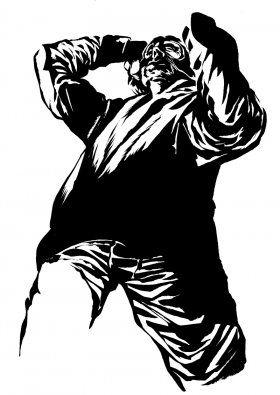
The members of the jury who appeared in the Court of Law on July 5th 2013 did not have to determine whether the respondent was guilty of murder or not. The Justice prosecutor himself declared that it was impossible to call for the suspects conviction. According to Prosecutor Marcelo Balzer Correia, who has been in office for ten years at Curitiba Jury Trial Court, there was simply no evidence of the guilt. The only thing that the inquiry brought against the defendant was a mere testimony. The witness admitted that he did not know much about the crime. Judge Mychelle Pacheco Cintra agreed with Correia and the case was closed, like so many other cases of murders which end up closed and unsolved in Curitiba.
In many cases, police take only a few witness statements to try to solve the murder. The study carried out by the reporters of Gazeta do Povo based on the inquiries of one thousand homicides in Curitiba shows that 595 cases contained only three witness statements or less. There are even cases without a single witness statement. The study also revealed that some factors have influence over the outcome of the investigation, as it is the case of the crime repercussion.
According to Correia, beyond the fact that only a few witness statements are taken, a distinction needs to be made: "Most witnesses do not testify about the crime itself. There were not present at the scene during the crime and did not see what happened. We call them informers," he says. Informers are relatives or friends of the victim. They provide information on the victim´s character: if he used drugs, alcohol or even had some feud.
"The investigators interview the victims father and mother to know if he had fought with them, or with his spouse, or his neighbors. They usually do not find anything and send the inquiry over to the Public Prosecutor Office, totally shameless." The witness is the person who was present or witnessed whatever element linked to the crime," says José Vicente da Silva Filho, consultant in public safety and Professor at São Paulo´s Military Police Study Center of Public Safety.
There are many similar cases. The inquiry of JGM´s murder which took place in October 2010 only contains one statement. It came from his mom who said not knowing anything about the crime. NRS´s case also illustrates this phenomenon. He was working as a second-hand car retailer when he was murdered in November 2010. The only witness interviewed by the police was his brother who had little contact with the victim.
DifferencesThe reportage also shows that there is a relationship between the quantity of testimony and the investigations outcome. The inquiries analyzed by the reporters that contained a suspect had twice as many testimonies than the rest: they had an average of 7 statements for each case.
The reportage also covers cases which resulted in the condemnation of the suspect. The result is the same. Looking at the homicides committed in Curitiba in 2003, only one out of 25 defendants received a sentence. Gazeta do Povo had access to 12 of these cases. The average number of statement taken before the inquiry was sent to the Judiciary was of 7.2 twice as many as in the rest of the inquiries on average.
"Murders are some of the easiest crimes to solve because they usually involve individuals who know each other. There always are testimonies, related to the victim or his environment. Only a few cases of murder have no testimony," says Arthur Trindade Maranhão, coordinator of the Study Group on Violence and Safety at the University of Brasilia.
A large number of statements does not guarantee a good investigation, says police chief
The amount of witness statements for each murder investigation did not evolve much over the past years. It improved a little compared with 2010, when the average was 3.5 for each murder. According to the study done by the reporters of Gazeta do Povo, the average was 4.1 this year.Despite the fact that the average of testimony has remained constant over the past years, Police chief Rubens Recalcatti, said that it was not problematic. According to him, it is possible to solve a crime with only two testimonies. He believes that 3.8 witnesses heard in each crime is a good average.
According to Recalcatti, the fact that the inquiries reporting a suspect have a higher average (7 witnesses) does not necessarily creates a relationship between the number of testimony and the quality of the investigation. To him, cases with indictment usually have more witnesses heard so as to attest who the author crime is.
Recalcatti also claims that there no longer exist cases without a single witness statement. The reporters of Gazeta do Povo came across three homicides that took place in 2013 without a single witness being heard during the first thirty days of the investigation. In two of these, the victims had not been identified while the victim was identified in the remaining one.
DifficultyThe head of Civil Police, Riad Farhat, claims that it is difficult to interview witnesses in a murder case, "because nobody commits a homicide in front of other people." Usually, the police only find the victim at the crime scene. There begins the hard work of the police." Regarding the code of silence, Farhat affirms that the main issue comes from the fact that the murder takes places amongst people who are part of the criminal world. "Nobody speaks out because people know that a statement made in the press or at the police station would have immediate repercussion," he adds.



